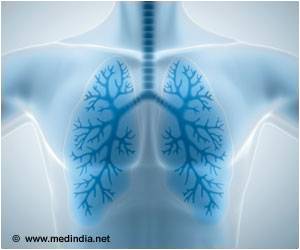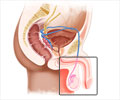Acetone levels in the breath after a heavy workout indicate breakdown of fat. his makes it suitable for everyday use.

- A highly convenient method to analyze fat breakdown in the body has been developed.
- The instrument is a breath analyzer with a gas-detecting sensor that indicates the presence of acetone.
- Results of the tests using the breath test were accurate when compared with the standard test done in the blood.
TOP INSIGHT
The breath analyzer works on a small gas sensor that measures the presence of acetone and produces accurate results compared to that of a standard lab test.
Gas- Detecting Sensor
During exercise, especially with endurance training, the body burns not only carbohydrates such as sugar, but also fat.
The most volatile of the lipid metabolites which is exhaled is acetone. Guntner and his colleagues have developed a small gas sensor that measures the presence of this substance.
The sensor is much more sensitive than previous sensors: it can detect a single acetone molecule in hundred million molecules. It also measures acetone exclusively, so the more than 800 other known volatile components in exhalations do not affect the measurement.
Tungsten trioxide nanoparticles interact with acetone if the atoms of the nanoparticles are arranged in a certain crystalline structure. The interaction reduces the electrical resistance of the chip coated with the nanoparticles, and this phenomenon can then be measured. The size of the chip is 1-cent euro coin, but will be refined to smaller chips.
Breath Analysis in Par With Standard Blood Test
The research team tested the functioning of the sensor in volunteers during exercise. The test subjects were asked to complete a one-and-a-half-hour session on a bicycle ergometer with two short breaks. The test subjects were asked to blow into a tube that was connected to the acetone sensor at regular intervals.
"We were able to show how the acetone concentration in the exhalations varies greatly from person to person," says Guntner. Scientific opinion used to hold that athletes only begin burning fat after a certain period of physical exertion and on reaching a certain heart rate, but this view is now outdated.
Lipolysis in some test subjects only started towards the end of the one-and-a-half-hour training session. In the other volunteers, the measurements showed that their bodies began burning fat much sooner.
Control measurements showed that the new measurement method correlated well with the concentration of the biomarker beta-hydroxybutyrate in the blood of the test subjects. This blood analysis is one of today’s standard methods for monitoring lipolysis.
"Our technology has the major benefit of being inexpensive, manageable and yet highly sensitive - plus it can take measurements in real time," says Guntner. "This makes it suitable for everyday use, while working out at a fitness centre or for people on a diet."
The scientists are also working on developing gas sensors for other medically relevant molecules in exhalations, including ammonia to test kidney function, isoprene to test cholesterol metabolism and various aldehydes for the early detection of lung cancer.
Reference
- Güntner AT, Sievi NA, Theodore SJ, Gulich T, Kohler M, Pratsinis SE. Noninvasive body fat burn monitoring from exhaled acetone with Si-doped WO3 sensing nanoparticles. Analytical Chemistry;(2017) doi: 10.1021/acs.analchem.7b02843.
Source-Medindia
 MEDINDIA
MEDINDIA




 Email
Email










